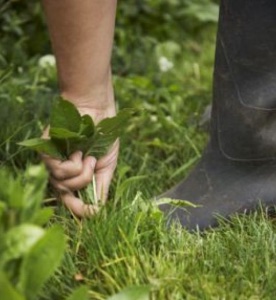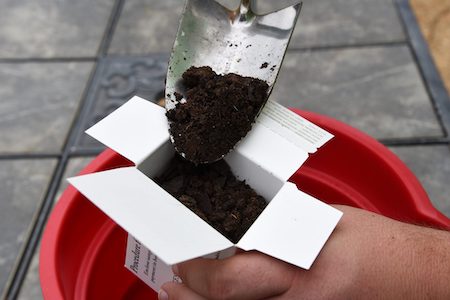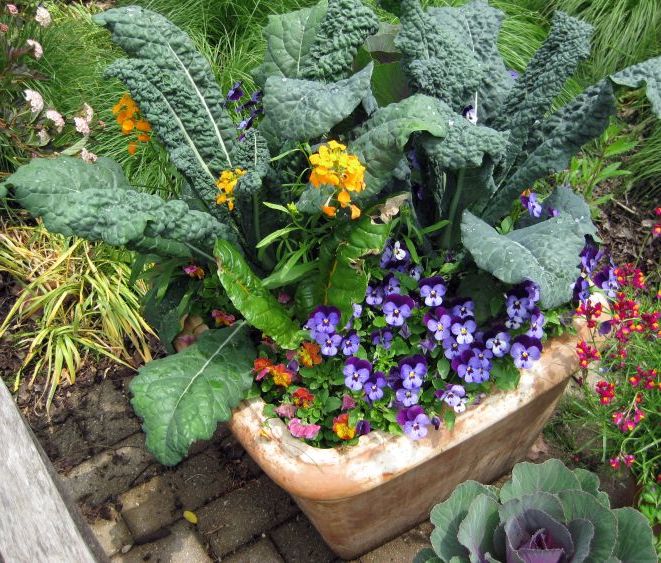Gardener’s Resolutions
 by Kathleen Curthoys, Fairfax Master Gardener
by Kathleen Curthoys, Fairfax Master Gardener
Some New Year’s resolutions start off with a bang in January and fizzle by February. Gardeners, fortunately, find reasons to renew their gardening resolutions by the month and the season, and any time a dandelion pops up in the lawn.
Here are a few ideas for gardening resolutions for 2024. If I keep some of them, I’ll call 2024 a good year, regardless of the dandelions.
Keep learning about the plants you have and the ones you’d like to have, and what they’re going to need from you. For this, there are lots of resources right here at fairfaxgardening.org in our monthly updates and in the archives. Or google the plants on cooperative extension websites for reliable, scientific information. During the growing season, visit the Master Gardeners at your local library, farmer’s market or community garden to talk about plants.
Expand on your skills by taking advantage of a wealth of classes and programs in our area, such as Master Gardener clinics and events as well as classes and programs at local botanical gardens, garden centers and garden clubs. See the Calendar page on this website for a roundup of upcoming events in the area, from public gardens in Fairfax to programs at the Smithsonian. There’s even information on a late-winter getaway to the Philadelphia Flower Show through the Fairfax County Park Authority.

Test your soil
If this hasn’t been done in a few years, or ever, consider getting a soil test kit from your local Master Gardeners and sending in your samples for testing to Virginia Tech. You’ll receive detailed results and, if needed, recommendations on how to amend your soil for best results for your lawn and garden.
Put the right plant in the right place
Where you put a plant does matter, even if you follow plant labels. It’s easy to pick up a blooming plant at the garden center, plant it at home, and never see another blossom. It happens. So the part-shade plant you chose isn’t happy with two hours of dappled light per day? Try it in a spot with more like four or five hours instead. Last spring I planted a fern in a container on my shady deck. Ferns love shade, right? But to my surprise, the south-facing brick wall next to the fern reflected enough light and heat that the fern was looking fried by September. (And yes, it got watered!) Lesson learned for this year.
Keep emphasizing native plants
They are adapted to our climate, our conditions and our pollinators. Native plants will stay healthier and more resilient, generally, than nonnatives. They’ll need less maintenance, water and fertilizer. Local butterflies, bees, birds and moths are adapted in specific ways to native plant species. Natives are a win-win.
Fight weeds naturally
The most environmentally friendly way to get rid of weeds is to get a gardening tool and pull them up manually. Yes, it is work and it can be tough on the knees. You have acres to tend? A gardener friend of mine does, too. She loads an audio book, gets her knee pad and folding chair and sets a time when she’ll stop and get a cup of tea, so the job won’t seem onerous. And it does count as exercise. The more you control the weeds, the fewer you (and your neighbors) will have, and deemphasizing chemicals is good for everyone.
Grow a vegetable
Even if you have limited space and time, you can still reap a harvest. With a well-lit spot and a container, you can grow your own mixed leafy greens. This is good for your health and your wallet. You can start now with cool-season lettuces.
Grow an herb, or three
There’s nothing like having your own fragrant fresh herbs to snip and use in your meals at home. Even if you did nothing more than take in the aroma of them, your quality of life is improved. All it takes is a container, one small spot outside with enough sun and voila. Some herbs will grow as perennials. My chives are the first garden plants to pop up in the spring (except for the daffodils), and they are ready to add to homemade meals by April. They even fling out lovely flowers. The $2 that I spent on a chive plant in 2001 has repaid me over and over. Another gardener I know in a cooler location has an herb garden packed with sage and oregano every spring whether he does anything or not. Thyme is another stalwart; give it until later in the spring and the green sprigs will come back like gangbusters.
 Think more about edible landscaping
Think more about edible landscaping
By mixing flowers, herbs, vegetables and fruits together in your landscape, you add utility and beauty no matter how much or how little space is available. This works for both cultivated beds and containers. Some gardeners save space by going vertical with tomatoes, beans and squashes.
Get your lawn in shape
Say you’ve learned when to water, and what height to mow and when, and your weeds are pretty much under control. But have you got bare patches, thin spaces, grass that won’t cooperate? Help is readily available through our Home Turf service through the Fairfax County Master Gardener Program. You’ll get detailed answers to your lawn questions and a plan to improve your lawn, whether you do the work or hire a lawn service.
While you’re at it, think about whether you need all that lawn.
Grow young gardeners
Show your kids and grandkids around the garden and tell them about it. Maybe let them explore a little. If they want to try their own hand at gardening, maybe designate a container with a few easy-to-grow plants in good light and help them remember when it’s time to water. Welcome neighborhood kids and their parents to your garden if they want to take a look.
Set a date to celebrate
Choose a time when your garden is at its best and reward yourself by sitting back and enjoying it. Maybe you’ll plan a well-timed party and share the beauty with others: an azalea-season garden party, a June fete among the roses, a summer hosta fest or an October barbecue amid the asters and turning leaves.
Happy New Year!